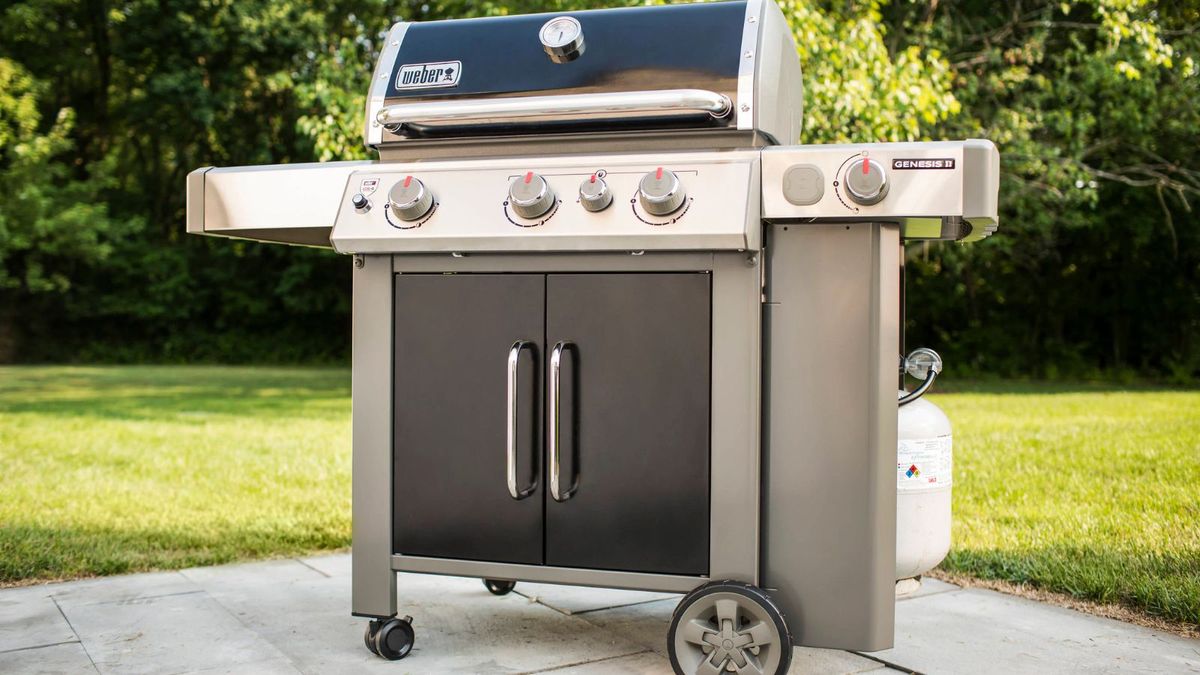Mastering the Art of Cooking Beef Ribs on a Gas Grill: The Ultimate Guide
Written By James Morgan
Beef ribs are the epitome of savoriness and culinary delight, and when you cook them right, they become the star of your barbecue fest. If you are wondering how to cook beef ribs on a gas grill, you'll be pleased to know that it's a rewarding process that infuses flavors deeply into the meat while achieving that tender, fall-off-the-bone goodness. In the following article, we will dive deep into the ins and outs of grilling beef ribs to perfection, suitable for BBQ enthusiasts and kitchen novices alike.

Why Choose Beef Ribs?
Beef ribs are often overshadowed by their pork counterparts, but they possess a distinct flavor profile that merits their own spotlight. Thick, meaty, and packed with a robust flavor, these ribs can turn even an ordinary barbecue into a mouth-watering event. The fat marbling through the meat helps keep the ribs juicy during the slow cooking process, making them an excellent choice for grilling.
Types of Beef Ribs
Back Ribs
Back ribs, also known as loin ribs, come from the upper part of the cow's ribcage. These ribs are usually tender with a good amount of meat on top of the bones. They are an excellent starting point if you're new to grilling beef ribs.
Short Ribs
Short ribs come from the lower part of the ribcage and are meatier and more flavorful than back ribs. They need a longer cooking time to break down the connective tissues but reward you with rich, succulent meat.

Essential Ingredients and Tools
Ingredients:
- 2 racks of beef ribs
- Salt
- Pepper
- Garlic powder
- Onion powder
- Smoked paprika
- Brown sugar
- Olive oil
- Your favorite BBQ sauce
Tools:
- Gas Grill
- Knife
- Cutting Board
- Aluminum foil
- Meat thermometer

Preparing Your Beef Ribs
Preparation is key when you cook beef ribs. Start by trimming any excess fat from the ribs using a good quality knife. Place the ribs on your cutting board for this task.
Removing the Membrane
The membrane on the underside of the ribs, while edible, can prevent flavors from penetrating and can become chewy. Use your knife to loosen the membrane from one end and then use a paper towel to grip and pull it off. This process can be a bit tricky but is well worth the effort.
Seasoning
Rub the ribs with olive oil to help the seasoning stick. In a bowl, mix salt, pepper, garlic powder, onion powder, smoked paprika, and brown sugar. Generously coat the ribs with this rub, pressing it in to ensure it adheres well. Let the ribs marinate for at least an hour, though overnight in the refrigerator is even better for deeper flavor.
Prepping the Gas Grill
Before you start cooking, preheat your gas grill. Aim for a temperature between 225F and 250F for slow cooking. Ensure that the grill grates are clean to prevent the ribs from sticking. If possible, set up your grill for indirect cooking by turning on only half of the burners and placing the ribs on the unlit side. This setup mimics the low and slow cooking of a traditional smoker.
Adding Flavor Boosters
While preheating, add wood chips in a smoker box or on a piece of aluminum foil directly over the flames. Popular choices include hickory, mesquite, or applewood. The wood chips add a smoky flavor to the ribs, mimicking the effect of a wood smoker.
Grilling the Beef Ribs
Initial Smoking
Place the beef ribs on the cooler side of the grill, bone side down. Close the lid and maintain the grill temperature by adjusting the knobs as needed. Smoke the ribs for the first couple of hours to infuse them with deep, smoky flavor.
Cooking
After the initial smoking period, continue cooking the ribs until they become tender. This may take an additional 3-4 hours. Keep the lid closed to maintain a consistent temperature. Check the internal temperature of the ribs using a meat thermometer; they should reach around 190F to 203F for optimal tenderness.
Wrapping
For more tender ribs, you can wrap them in aluminum foil after the first couple of hours of cooking. Add a splash of apple juice or beer to the foil pack for extra moisture and flavor.
Applying the BBQ Sauce
In the final 30 minutes of cooking, unwrap the ribs if you had them foiled. Brush them generously with your favorite BBQ sauce. This gives you a beautiful caramelized glaze. Continue grilling until the sauce sets, a process that takes about 20-30 minutes.
Serving Your Beef Ribs
Once done, remove the ribs from the grill and let them rest for about 10-15 minutes. This resting period allows the juices to redistribute within the meat, ensuring moist and delicious ribs. Slice the ribs between the bones using a sharp knife and serve.
Pro Tips for Perfect Beef Ribs
- Choose Quality Meat: High-quality beef ribs will offer better taste and tenderness. Look for good marbling.
- Patience is Key: Low and slow cooking is essential for tender ribs.
- Experiment with Rubs and Sauces: Feel free to try different seasoning blends and BBQ sauces to find your favorite flavor profile.
- Use a Meat Thermometer: Ensure your ribs are cooked to perfection by checking the internal temperature.
Cleaning Up
After enjoying your delightfully grilled beef ribs, it's essential to clean your tools for future use. Use a cookware cleaner to ensure your grill is spotless and ready for your next barbecue. Don't forget to maintain your cutting board by applying some cutting board oil regularly to keep it in top shape.
As an Amazon Associate, I earn from qualifying purchases.



